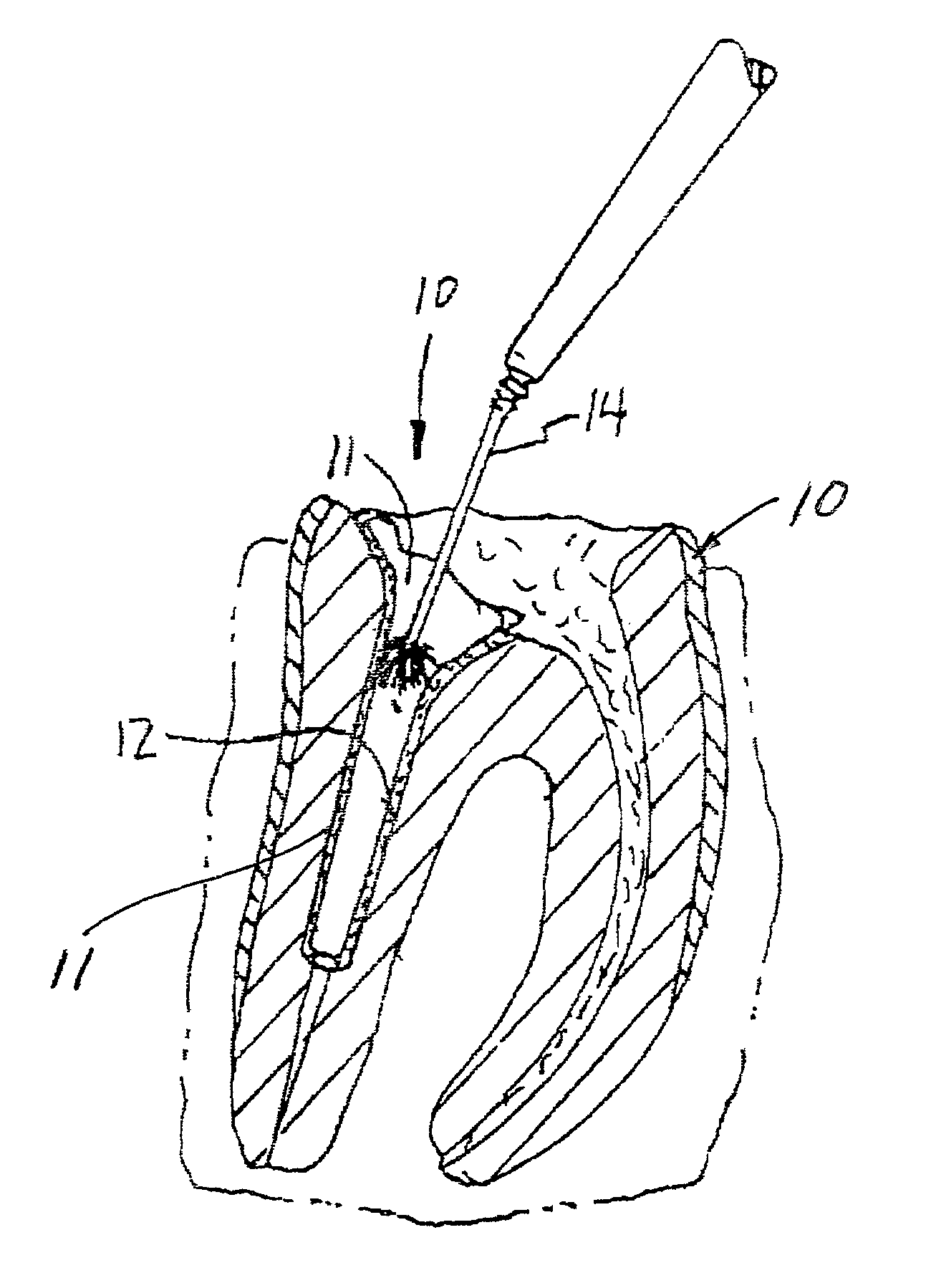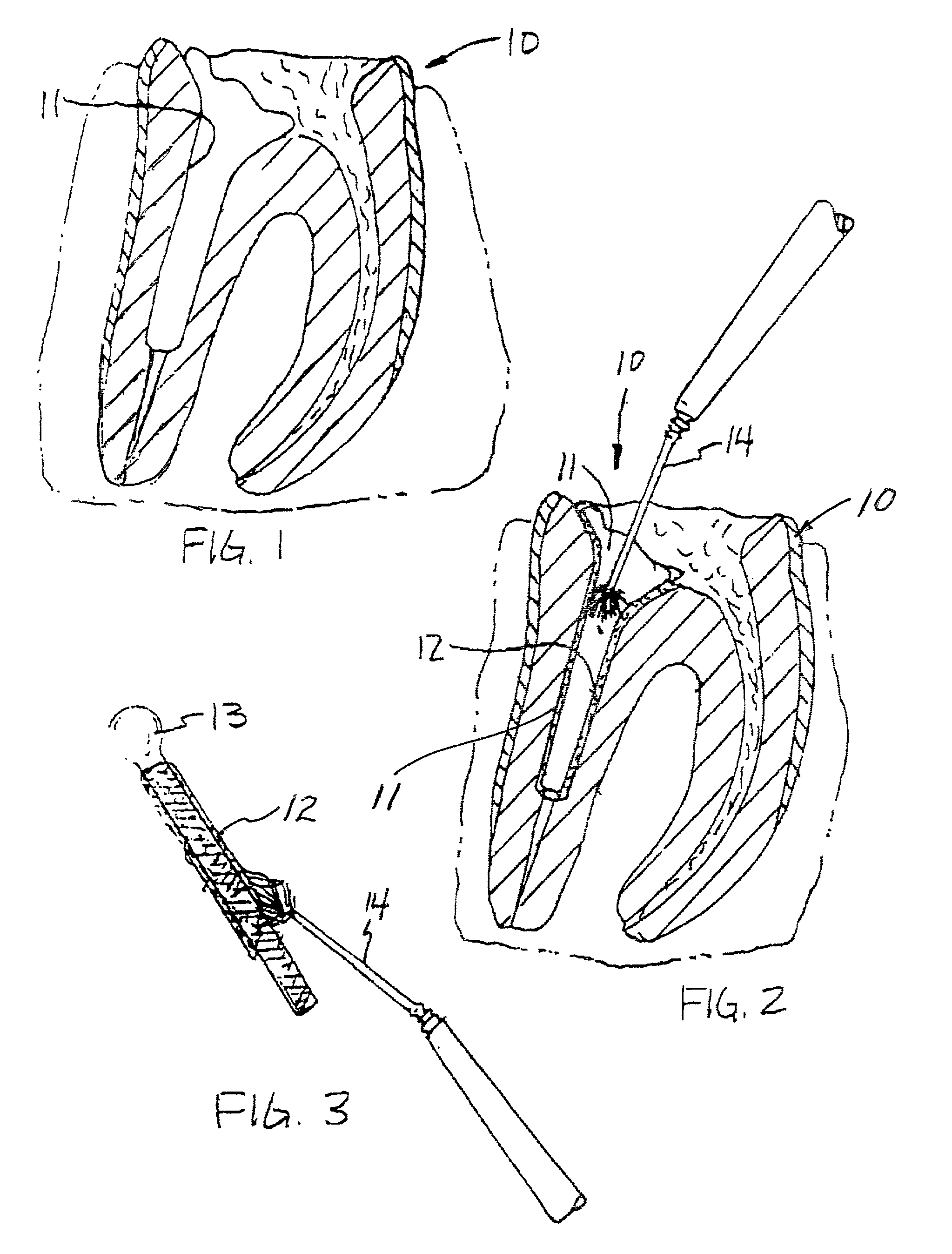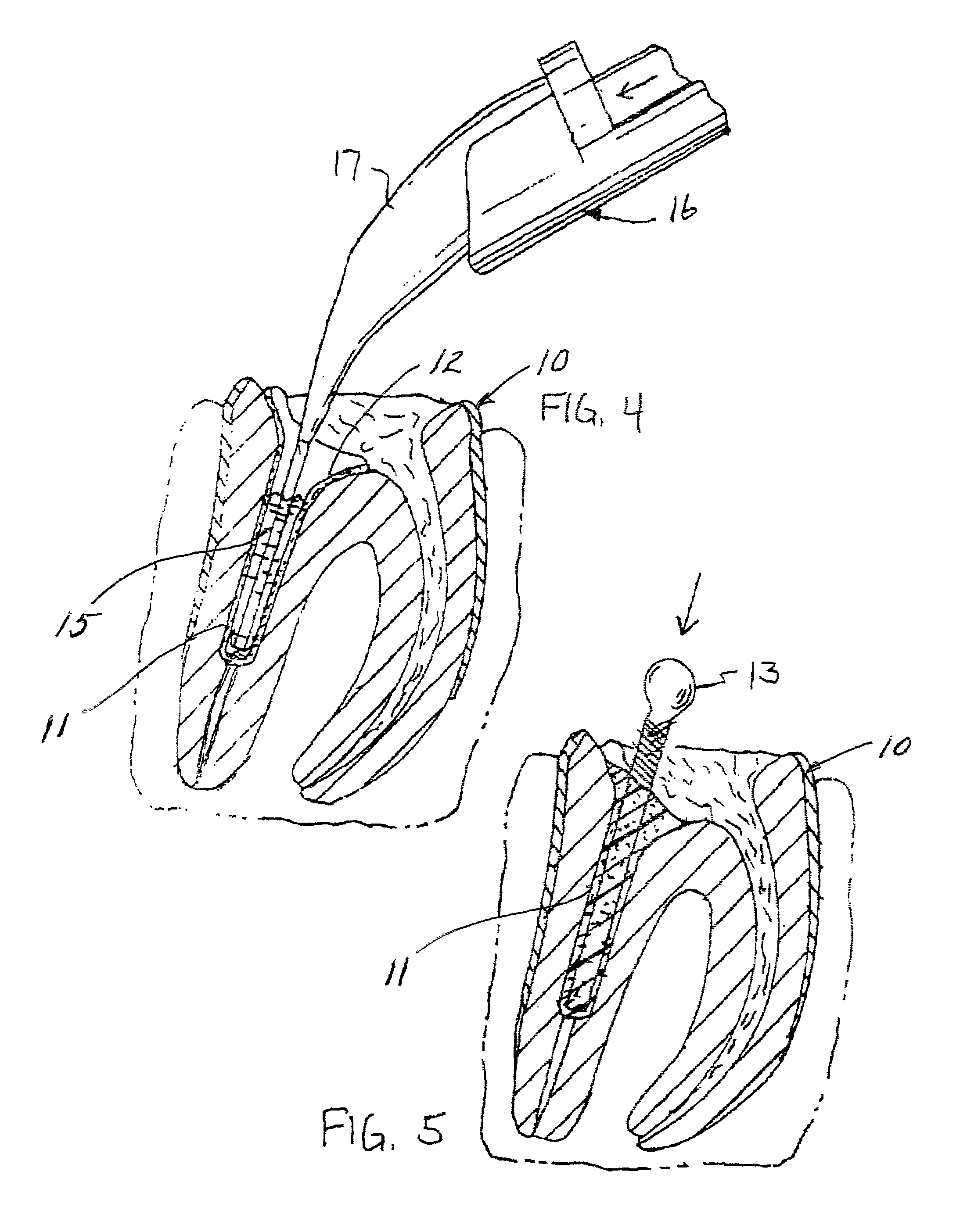Contact cure dental post cement and method of placing a dental post
- Summary
- Abstract
- Description
- Claims
- Application Information
AI Technical Summary
Benefits of technology
Problems solved by technology
Method used
Image
Examples
example 1
[0046]
Ingredients -Wt.Ingredients - Wt.1st Component%2nd Component%Bis-GMA50Bis-GMA34Triethylene glycol38Triethylene glycol20dimethacrylatedimethacrylateN, N Bis (2-hydroxy-1.8Powdered quartz40ethylo)-p-toluidineBenzoyl peroxide1.0Silica3.2Hydroxyethyl methacrylate5Hydroxyethyl methacrylate7
[0047]It will be understood that each component is separately packaged so that as hereinabove described, the first component is first coated onto the inner walls of a properly prepared post hole and the second component is then injected into the post hole, preferably by syringing, so no mixing of the two components is required. The post is then immediately inserted into the post hole before the cement sets. The cement is rendered self curing on contact and in a matter of minutes, the post is firmly secured so that it cannot be twisted or pulled out of the post hole.
example 2
[0048]The cement was formulated as follows:
[0049]
Ingredients -Wt.Ingredients -Wt.1st Component%2nd Component%Ethoxylated Bis-phenol A20(Same as in Example 1)dimethacrylateTetrahydrofurfuryl methacrylate6.5Ethylene glycol dimethacrylate20Hydroxpropyl methacrylate19Polyethyl methacrylate30N, N dimethylo-p-toludine2.5Silica2.0
[0050]The application technique of the formulation of Example 2 is the same as hereinabove described except that before cementing the post hole, it was thoroughly dried using a mixture of alcohol and ethyl ether.
example 3
[0051]The cement was formulated as follows:
[0052]
Ingredients -Wt.Ingredients -Wt.1st Component%2nd Component%Polyalkyleneglycol42Polyalkyleneglycol12dimethacrylatedimethacrylateDiglycidyl ether of8.0Diglycidyl ether ofBis-phenol ABis-phenol ADimethacrylate (Bis-GMA)Dimethacrylate (Bis-GMA)16Ethyl / methyl methacrylate28Powdered Glass68polymerSilica3.3N, N Bis (2-hydroxy-2.0Benzoyl peroxide0.7ethylo)-p-toluidineHydroxyethyl methacrylate20
[0053]The recommended application technique of the formulation of Example 3 is the same as described with respect to the formulation of Example 1.
[0054]It will be understood that the formation of the instant invention may include a releasable fluoride. A releasable fluoride may be included in the above formulae by the incorporating therein 0.1 to 0.5% by weight of sodium fluoride, which is preferably added to the paste or second component.
[0055]As noted herein, the cement may also be used to set a crown or bridge. After the tooth has been properly prep...
PUM
| Property | Measurement | Unit |
|---|---|---|
| Fraction | aaaaa | aaaaa |
| Fraction | aaaaa | aaaaa |
| Fraction | aaaaa | aaaaa |
Abstract
Description
Claims
Application Information
 Login to View More
Login to View More - R&D
- Intellectual Property
- Life Sciences
- Materials
- Tech Scout
- Unparalleled Data Quality
- Higher Quality Content
- 60% Fewer Hallucinations
Browse by: Latest US Patents, China's latest patents, Technical Efficacy Thesaurus, Application Domain, Technology Topic, Popular Technical Reports.
© 2025 PatSnap. All rights reserved.Legal|Privacy policy|Modern Slavery Act Transparency Statement|Sitemap|About US| Contact US: help@patsnap.com



